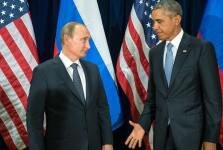* 17 tourists dead in attack, according to Prime Minister
* Polish, Italian, German, Spanish tourists among dead in Tunis attack
* Hostage situation in famous museum
* Security forces helped up to 30 people escape building
* Museum next to parliament where anti-terrorism debate was taking place
Gunmen opened fire at a leading museum in Tunisia’s capital, killing 17 people and wounding at least 6, including foreign tourists, authorities said.
It was the first attack on a tourist site in years in Tunisia, a shaky young democracy that has struggled to keep Islamic extremist violence at bay.
Security forces filled the area around the National Bardo Museum in Tunis after the attack.

It was not immediately clear who the attackers were or if they took hostages, but interior ministry spokesman Mohamed Ali Aroui told Radio Mosaique the standoff was over after the raid.
Private television station Wataniya showed images of masked Tunisian security forces escorting dozens of tourists up nearby steps and away from the danger, as armed security forces pointed guns towards an adjacent building.

Many elderly people, apparently tourists, ran in panic to safety, including at least one couple carrying two children.
Tunisia’s parliament building, next to the museum, was evacuated.

Mr Aroui told Wataniya television that eight people were dead – seven foreign tourists and one Tunisian. He did not provide nationalities for the foreign victims.
Poland’s foreign ministry announced that three Poles were among the wounded while the Italian foreign ministry said at least two Italians were wounded and 100 other Italians had been taken to a secure location.
Tunisia recently completed a rocky road to democracy after overthrowing its authoritarian president in 2011, seen by many as the start of the so-called Arab Spring. The country has been more stable than other countries in the region but has struggled with violence by Islamic extremists in recent years, including some linked to Islamic State. It also has extremists linked to al Qaida’s North Africa arm who occasionally target Tunisian security forces.
A disproportionately large number of Tunisian recruits – some 3,000, according to government estimates – have joined IS fighters in Syria and Iraq.
The American embassy in Tunis was attacked in September 2012, seriously damaging the embassy grounds and an adjoining American school. Four of the assailants were killed. Overall, though, the violence that Tunisia has seen in recent years has been largely focused on security forces, not foreigners or tourist sites.
The attack is a strong blow to Tunisia’s efforts to revive its tourism industry.
The National Bardo Museum, built within a 15th-century palace, is the largest museum in Tunisia with collections covering two floors, and it houses one of the world’s largest collections of Roman mosaics.
The museum is near the North African nation’s parliament, four kilometres (two-and-a-half miles) from the city centre. A new wing with contemporary architecture was built as part of a 2009 renovation, doubling the surface area. Some 8,000 works are displayed in the museum, according to the website.
The attack comes the day after Tunisian security officials confirmed the death in neighbouring Libya of a leading suspect in Tunisian terror attacks and the killings of two opposition figures in Tunisia. Ahmed Rouissi gained the nickname of the “black box of terrorism”. The information on his death was made public by security officials giving evidence in parliament and cited by the official TAP news agency.
Libya, which has devolved into chaos, is a source of major concern for Tunisia.
Also a major worry is the Mount Chaambi area on the border with Algeria where al Qaida in the Islamic Maghreb has reportedly been helping a Tunisian group which has killed numerous soldiers.
Some of the Italians in the museum were believed to have been passengers aboard the Costa Fascinosa, a cruise liner making a seven-day trip of the western Mediterranean that had docked in Tunis.
Ship owner Costa Crociere confirmed that some of the 3,161 passengers were visiting the Tunisian capital and that a tour of the Bardo was on the itinerary, but said it could not confirm how many, if any, passengers were in the museum at the time. It said it had recalled all the passengers to the ship and was in touch with local authorities and the Italian foreign ministry.






